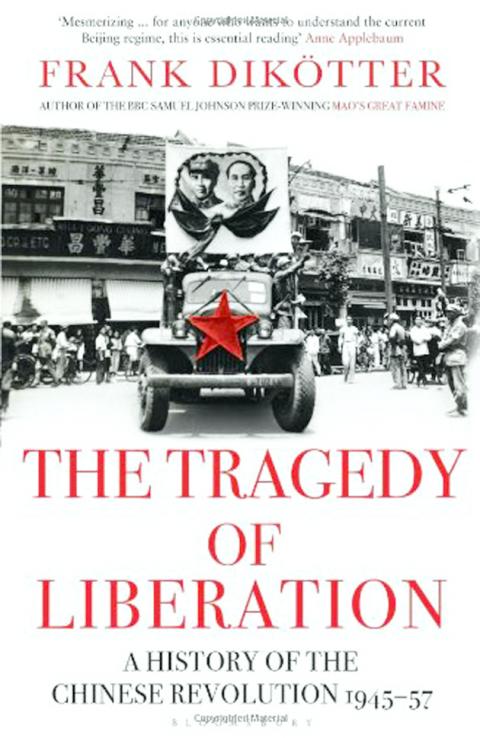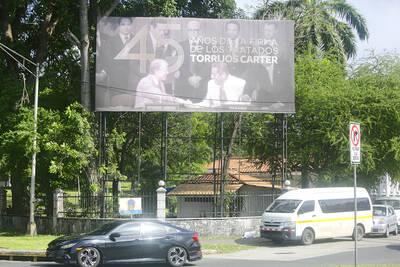It’s a commonly-held opinion that all revolutions begin in gladness but eventually descend to despondency and madness (to quote Wordsworth). The French, Russian and Chinese revolutions, it’s thought, started with the people’s joy at the overthrow of the old regimes, but their attitudes later became characterized by a horror at the realities of the new ones.
Frank Dikotter, in the case of China’s revolution, begs to differ. Things were pretty much dreadful from the very start, he argues, and there’s little evidence of an initial “honeymoon” period.
This isn’t a book about contemporary China. The events surveyed happened 50 years and more ago, so any attempt to marshal ideas of the grim reality of the initial revolutionary period in any contemporary “neo-Cold War” polemic would be inappropriate. There isn’t even much disagreement in China itself over what constituted the reality in that far-off era.

This new book constitutes the initial volume in Dikotter’s projected “People’s Trilogy”, a three-volume project that kicks off with this present title, has his Mao’s Great Famine [reviewed in the Taipei Times September 12, 2010] in the middle, and will conclude with a book on the Cultural Revolution. Dikotter, in other words, began in the middle and has now completed the opening volume.
The general outline of these early, often brutal, years is probably well-enough known. There was the murder of landlords, the starving of previously pro-Nationalist cities into submission, the Terror that saw one in a thousand, perhaps more, killed as class enemies, the intimidation through confessions and “study-sessions,” and the sending of half a million intellectuals to labor camps in 1957. Alongside these were hugely ambitious economic programs that gave people reason to feel that life was indeed going to get better, and quickly.
There are some extraordinary details here, such as that Mao Zedong (毛澤東) drove to Beijing in 1949 in a bullet-proof Dodge limousine made in Detroit for Chiang Kai-shek’s (蔣介石) personal use in the 1930s. After the fall of Nanjing, the Nationalist capital, “Chen Yi (陳毅) and Deng Xiaoping (鄧小平) took turns sitting in Chaing Kai-shek’s chair.” But then the narrative is vivid and full of color everywhere, making this book a potential blockbuster as well as a piece of extensive historical research.
Dikotter’s historical summaries are also brisk. Few complained at the Chinese invasion of Tibet in 1950 — Britain had “lost interest in the region … since India had become independent,” and the UN “had their hands full with the Korean War.” There are few complexities here to perplex the general reader.
All in all, this book seems to represent something of a change of tone for Dikotter. Personal accounts are extensively used, and the prose style is markedly popular and accessible. There isn’t a boring paragraph anywhere, and considering that the author must have had to read through some boring primary material, he must simply have decided to leave most of it out. The benefit for the ordinary reader is immense. Dikotter has never been a dull writer, but here he appears to be reaching out for a mass readership. This book, you’ll note, is being published, like Mao’s Great Famine, by Bloomsbury, not by one of the increasingly pervasive university presses.
Readable, not entirely check-able, summaries abound. “People fled the rust-red plain in droves.” “Mao would agree to almost anything on paper, so long as nobody was checking what he was doing on the ground.” “Thousands of banners fluttered in the autumn breeze above a sea of people carefully selected from all walks of life.” “[Prostitutes] stood in the doorways openly soliciting customers: ‘Come in for a cup of tea!’” This is popular history and, though some academics may disdain it, it’s welcome to have Dikotter, a man whose research credentials are impeccable, trying his hand at the style so successfully.
Sometimes Dikotter’s research or his extensive reading comes up with a gem. Thus this, by a man tied onto a plank for denunciation: “I lay on the wooden plank looking up. The rain had stopped. Amid the loud shouting, I could hear the river nearby. The clouds had dispersed and the sky was clear blue. I thought ‘People lived harmoniously under the same sky in the same village for many years. Why did they act like this now?’”
Everything deemed relevant to the revolution is described in this book. In a chapter called “The Road to Serfdom”, for instance, Dikotter spells out the mechanics of collectivization. Earlier the campaign against Buddhists, Taoists and Christians, both Catholic and Protestant, is explained, and anti-Muslim sentiment detailed. We learn how books, the theater and cinema were all subject to rigorous censorship, with one publisher’s list being reduced from some 8,000 titles to just over 1,000 between 1950 and 1951, and how formerly eminent essayists, diplomats and liberals were systematically targeted. Little of this is new, but here Dikotter presents the evidence as part of a wide-reaching, very accessible story.
It therefore seems to me that what Frank Dikotter is doing in this trilogy is penning a comprehensive popular history of the revolution in China from its beginnings to what was effectively its close, the end of the Cultural Revolution in 1976. It’s intended to be a popular work, something that will be read by millions in the English-speaking world just as Jan Morris’s Pax Britannica trilogy was, and still is, read, or the popular histories of A.J.P. Taylor. But this trilogy will be popular in a special sense. It may be highly readable (“enjoyable” is hardly an appropriate word in the circumstances), but all the time you know it’s the product of a major authority on the period. Its generalizations are rooted in knowledge that isn’t necessarily displayed on the page, and its colorful evocations of time and place are based on long hours in the archives. The whole trilogy when it’s completed is thus likely to be, and deserves to be, the book almost everyone will turn to first when seeking an outline of its momentous and ultimately tragic subject.

April 14 to April 20 In March 1947, Sising Katadrepan urged the government to drop the “high mountain people” (高山族) designation for Indigenous Taiwanese and refer to them as “Taiwan people” (台灣族). He considered the term derogatory, arguing that it made them sound like animals. The Taiwan Provincial Government agreed to stop using the term, stating that Indigenous Taiwanese suffered all sorts of discrimination and oppression under the Japanese and were forced to live in the mountains as outsiders to society. Now, under the new regime, they would be seen as equals, thus they should be henceforth

Last week, the the National Immigration Agency (NIA) told the legislature that more than 10,000 naturalized Taiwanese citizens from the People’s Republic of China (PRC) risked having their citizenship revoked if they failed to provide proof that they had renounced their Chinese household registration within the next three months. Renunciation is required under the Act Governing Relations Between the People of the Taiwan Area and the Mainland Area (臺灣地區與大陸地區人民關係條例), as amended in 2004, though it was only a legal requirement after 2000. Prior to that, it had been only an administrative requirement since the Nationality Act (國籍法) was established in

Three big changes have transformed the landscape of Taiwan’s local patronage factions: Increasing Democratic Progressive Party (DPP) involvement, rising new factions and the Chinese Nationalist Party’s (KMT) significantly weakened control. GREEN FACTIONS It is said that “south of the Zhuoshui River (濁水溪), there is no blue-green divide,” meaning that from Yunlin County south there is no difference between KMT and DPP politicians. This is not always true, but there is more than a grain of truth to it. Traditionally, DPP factions are viewed as national entities, with their primary function to secure plum positions in the party and government. This is not unusual

US President Donald Trump’s bid to take back control of the Panama Canal has put his counterpart Jose Raul Mulino in a difficult position and revived fears in the Central American country that US military bases will return. After Trump vowed to reclaim the interoceanic waterway from Chinese influence, US Defense Secretary Pete Hegseth signed an agreement with the Mulino administration last week for the US to deploy troops in areas adjacent to the canal. For more than two decades, after handing over control of the strategically vital waterway to Panama in 1999 and dismantling the bases that protected it, Washington has